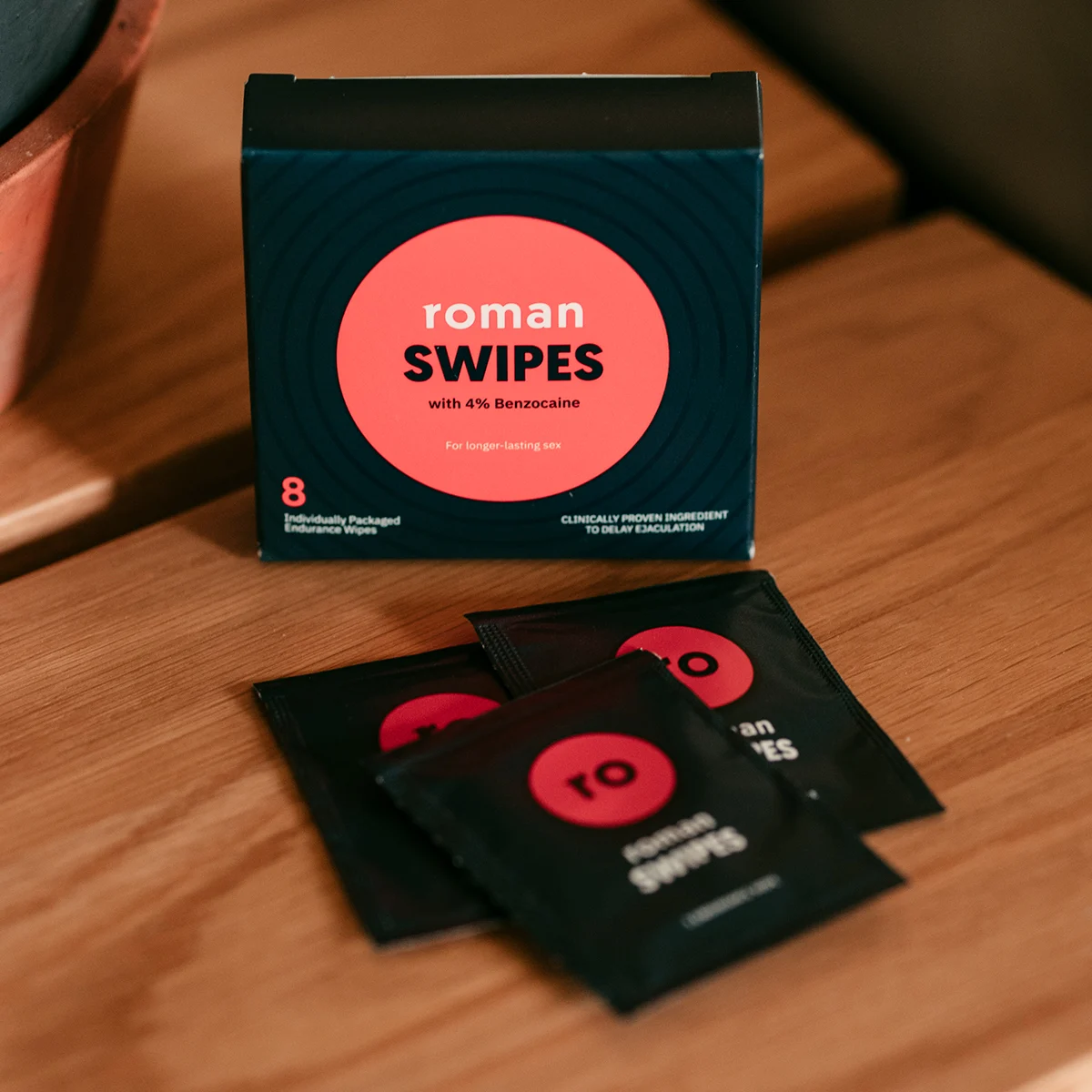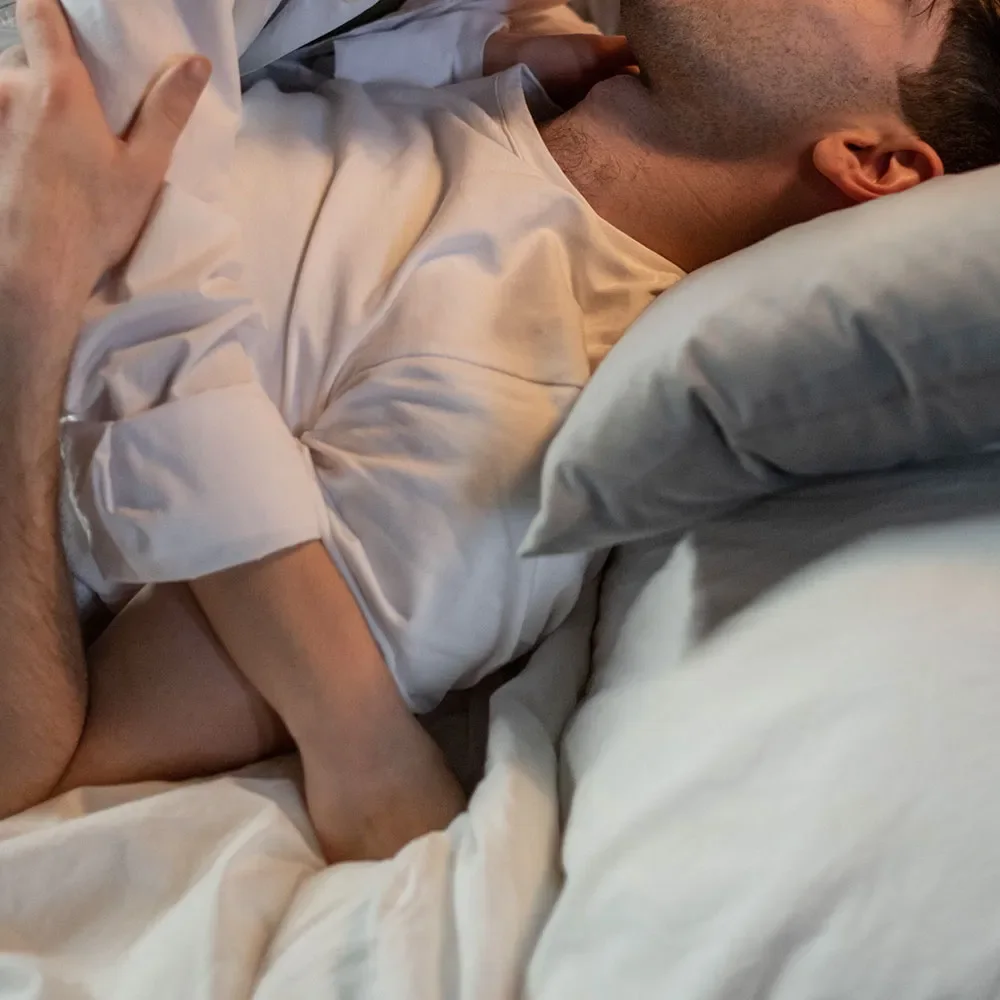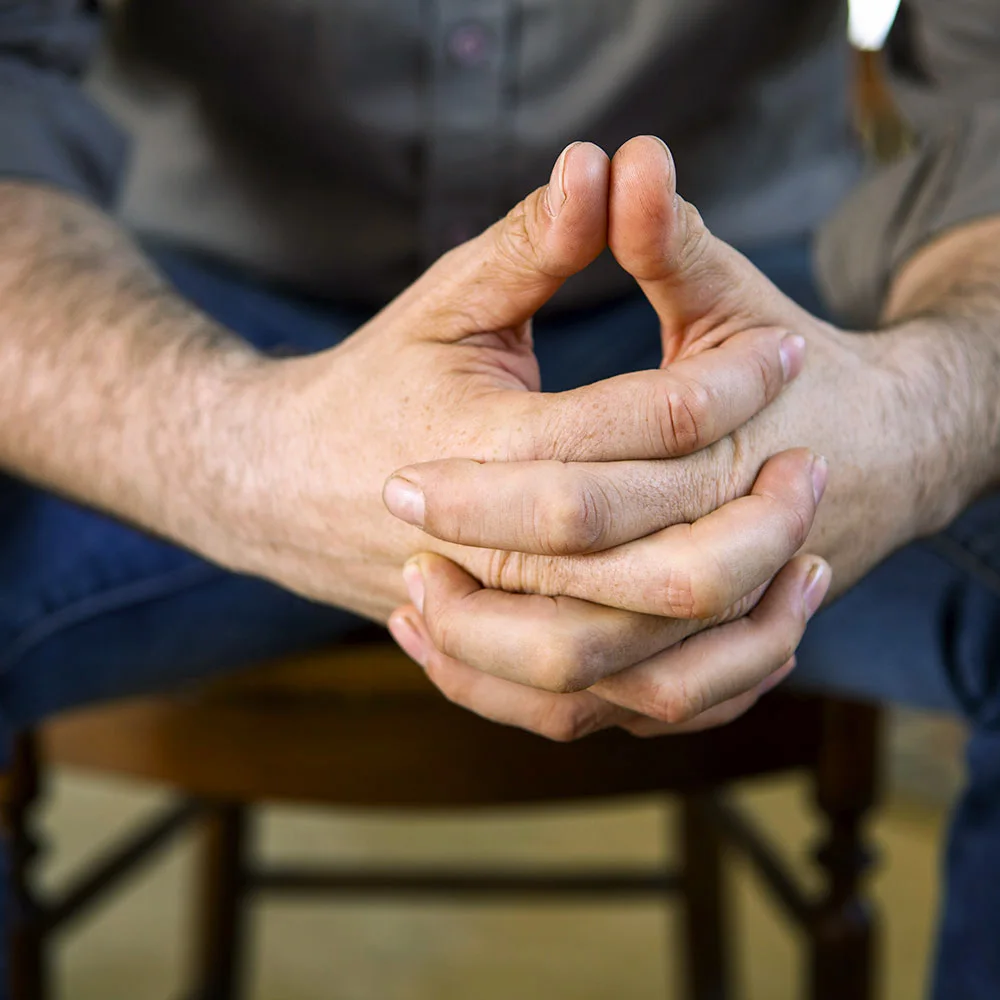Here's what we'll cover
Here's what we'll cover
If you've experienced premature ejaculation (PE), you've probably wished that you could hit the brakes and slow things down. That way, you and your partner could have a better sexual experience. While there's no slo-mo button for sex, there are a number of products and medical solutions that do pretty much the same thing. Lidocaine and benzocaine are two such potential treatments for PE.
What is premature ejaculation (PE)?
Premature ejaculation (or PE) is the most common form of sexual dysfunction among men (Martin, 2016): roughly one in three people with a penis experience it. Also known as rapid ejaculation, premature climax, or early ejaculation, PE is a sexual dysfunction in which a man ejaculates sooner than he or his partner would like (Crowdis, 2021).
PE can be treated with over-the-counter topical anesthetics (like benzocaine and lidocaine), behavior modification techniques, or prescription meds. Over-the-counter treatments have few side effects, but must be applied just before sex. Behavior modification techniques help many men, but they take time and effort. Prescription medications help men last longer without using a topical anesthetic before sex, but these can have side effects.
If you think you may have PE, talk to a healthcare professional to discuss treatment options.
What is lidocaine?
Lidocaine (brand name Xylocaine, among others) is a local anesthetic, meaning it's used to numb a specific area. It comes in many forms, including a liquid for injection during surgery, a topical spray, cream, or liquid, and an oral medication.
This medication has been on the market since the FDA approved it in 1948. Lidocaine is widely considered to be safe and effective at what it does: decreasing sensation in a certain part of the body (Beecham, 2021).
Before medical procedures, lidocaine is often used as a skin patch for pain relief or to numb mucous membranes (like the mouth and throat). It's sometimes used as a topical anesthetic—a lidocaine spray or other solution applied to the skin (Beecham, 2021).
In the U.S., lidocaine is FDA-approved as either an over-the-counter or prescription product, depending on the formulation, strength, and reason it’s being used (Oni, 2012).
With regards to PE, lidocaine is used in products that slightly numb the penis to prevent premature ejaculation. Some lidocaine-containing products for PE include lidocaine creams and sprays, like Promescent and K-Y Duration Desensitizing Spray. Some brands of condoms contain a bit of lidocaine on the inside. This has the effect of reducing sensation, which can make you last longer.
What is benzocaine?
Benzocaine is another local anesthetic. Like lidocaine, it is used as a topical anesthetic—something you apply to a part of the body to numb it.
There are several possible uses for this anesthetic. For example, you'll find benzocaine in many preparations that reduce the pain of toothaches, cold sores, canker sores (brand name Orajel, plus generics), and sore throats (Cepacol lozenges, Chloraseptic spray). Benzocaine can also be found in products that claim to reduce skin irritation and itching from scrapes, cuts, poison ivy, and insect bites (like the brand name Lanacane).
Benzocaine is a relatively safe drug (Singh, 2020). Like lidocaine, benzocaine is used in creams, gels, sprays, and wipes that slightly numb the penis to prevent premature ejaculation. Some of these products include K-Y Duration gel, Roman Swipes, and some brands of condoms.
Both lidocaine and benzocaine are pretty well-tolerated as local anesthetics, and adverse effects are rare. But some people have allergic reactions to benzocaine, so they may be prescribed lidocaine as an alternative (Jenerowicz, 2014).
How do lidocaine and benzocaine work to treat PE?
To treat PE, you can apply a product containing lidocaine or benzocaine—such as a cream, gel, or single-packet wipe—to your penis before sexual activity. That will lower the sensation in the penis and may help you last longer before ejaculating during sex. These products are formulated to reduce overstimulation without eliminating sensation altogether.
Lidocaine and benzocaine products can take as little as five minutes to take effect, and the numbing effects wear off after about 1–2 hours (Porst, 2019).
Preliminary data published in The Journal of Urology suggests that men who use 4% benzocaine wipes before sex may have an improvement in their PE. The men in the small study reported improvement in intercourse duration, distress relating to intercourse, control of ejaculation, and satisfaction with sexual intercourse compared to a placebo group (Shabsigh, 2017).
Are topical anesthetics like lidocaine and benzocaine safe to use?
Lidocaine and benzocaine are relatively safe, but there is important advice to follow regarding their use and possible side effects. In 2009, the FDA issued a public health advisory regarding potentially serious side effects of improper use of topical anesthetics (Green, 2009). This advisory was sent out after two women died after using this medication before laser hair removal, when lidocaine shouldn’t be used.
In 2018, the FDA strengthened its warnings after some people developed methemoglobinemia after using over-the-counter benzocaine (FDA, 2018). Methemoglobinemia is a life-threatening adverse reaction in which the blood turns bluish and loses its ability to effectively deliver oxygen to the body's tissues (Kumar, 2015).
Some simple rules to follow:
Follow the package directions.
Use the lowest strength and amount of the medication necessary.
Apply sparingly and only to the required area.
Do not apply to broken or irritated skin.
Do not wrap the area with dressing or apply heat to the skin after using these medications.
If you start experiencing pale, blue, or gray-colored skin, lips, or nail beds, shortness of breath, fatigue, confusion, headache, lightheadedness, or a rapid heart rate, seek medical attention immediately.
What else can I do to prevent PE?
Think using a topical lidocaine or benzocaine product to prevent premature ejaculation isn't for you? Worry not: there are a couple of other solutions you can try—but be aware that they can take time to work.
If you have questions about PE or PE treatments, it's a good idea to seek medical advice from a healthcare provider.
Medications
There are no FDA-approved prescription medications to treat PE directly. However, some healthcare providers prescribe certain medications off-label for PE if they determine it’s the proper treatment for their patients.
Some antidepressants known as selective serotonin reuptake inhibitors (SSRIs), like sertraline (brand name Zoloft), have the side effect of delaying ejaculation. Premature ejaculation can also be a side effect of erectile dysfunction (ED). Using medication like sildenafil (brand name Viagra) or tadalafil (brand name Cialis) can make it easier to achieve and prolong an erection, so your brain doesn't feel like you have to rush through sex (Crowdis, 2021).
Viagra Important Safety Information: Read more about serious warnings and safety info.
Cialis Important Safety Information: Read more about serious warnings and safety info.
Edging
The practice of edging, or the start/stop technique, can help you retrain when you have an orgasm. Men with or without PE have benefited from this technique, as it can give the person enhanced control over ejaculation. In this technique, you stimulate yourself to the point that you think is just before an orgasm and stop observing the sensations. The goal is to get to know the place in sexual excitement known as ejaculatory inevitability, so you can back off before ejaculating and prolong sex (Raveendran, 2021).
The squeeze technique
This is a commonly recommended therapy for PE. It goes like this (Reveendran, 2021):
Begin sexual activity as usual until you feel almost ready to ejaculate.
Then, have your partner squeeze the end of your penis at the point where the head (glans) joins the shaft.
Hold the squeeze for several seconds, until the urge to come retreats.
You can do this several times in one session.
If you can, make sure you have a satisfying orgasm at the end—you're retraining your body to have sex in a new, more pleasurable way, so you want to ensure you don't feel anxious or deprived.
DISCLAIMER
If you have any medical questions or concerns, please talk to your healthcare provider. The articles on Health Guide are underpinned by peer-reviewed research and information drawn from medical societies and governmental agencies. However, they are not a substitute for professional medical advice, diagnosis, or treatment.
Beecham, G. B., Bansal, P, Nessel, T. A., et al. (2021). Lidocaine. [Updated Aug 15, 2021). In: StatPearls [Internet]. Retrieved on Sep. 14, 2021 from https://www.ncbi.nlm.nih.gov/books/NBK539881/
Carson, C. & Gunn, K. (2006). Premature ejaculation: definition and prevalence. International Journal of Impotence Research, 18 Suppl 1, S5–S13. doi: 10.1038/sj.ijir.3901507. Retrieved from https://www.ncbi.nlm.nih.gov/pubmed/16953247
Crowdis, M. & Nazir, S. (2021). Premature ejaculation. [Updated Jul 1, 2021]. In: StatPearls [Internet]. Retrieved on Sep. 14, 2021 from https://www.ncbi.nlm.nih.gov/books/NBK546701/
Green, L. (2009). FDA issues strong warning on topical anesthetics. In Pharmacy Times [Internet] Retrieved on Sep 1, 2021 from https://www.pharmacytimes.com/view/epharmacytimesanesthetics--0109
Jenerowicz, D., Polańska, A., Glińska, O., Czarnecka-Operacz, M., & Schwartz, R. A. (2014). Allergy to lidocaine injections: comparison of patient history with skin testing in five patients. Postepy Dermatol Alergol, 31 (3), 134–138. doi: 10.5114/pdia.2014.40937. Retrieved from https://www.ncbi.nlm.nih.gov/pmc/articles/PMC4112262/
Kumar, M., Chawla, R., & Goyal, M. (2015). Topical anesthesia. Journal of Anaesthesiology, Clinical Pharmacology, 31 (4), 450–456. doi: 10.4103/0970-9185.169049. Retrieved from https://www.ncbi.nlm.nih.gov/pmc/articles/PMC4676230/
Martin, C., Nolen, H., Podolnick, J., & Wang, R. (2017). Current and emerging therapies in premature ejaculation: Where we are coming from, where we are going. International Journal of Urology: Official Journal of the Japanese Urological Association, 24 (1), 40–50. doi: 10.1111/iju.13202. Retrieved from https://pubmed.ncbi.nlm.nih.gov/27704632/
Porst, H. & Burri, A. (2019). Novel treatment for premature ejaculation in the light of currently used therapies: a review. Sexual Medicine Reviews, 7 (1), 129–140. doi: 10.1016/j.sxmr.2018.05.001. Retrieved from https://pubmed.ncbi.nlm.nih.gov/30057136/
Raveendran, A. V. & Agarwal, A. (2021). Premature ejaculation - current concepts in the management: a narrative review. International Journal of Reproductive Biomedicine, 19 (1), 5–22. doi: 10.18502/ijrm.v19i1.8176. Retrieved from https://www.ncbi.nlm.nih.gov/pmc/articles/PMC7851481/
Shabsigh, R., Shabsigh, R., Kaminetsky, J., Kaminetsky, J., Yang, M., Yang, M., et al. (2017). Pd69-02 Double-blind, randomized controlled trial of topical 4% benzocaine wipes for management of premature ejaculation: interim analysis. The Journal of Urology, 197 (4S), e1344-e1345. Retrieved from https://www.auajournals.org/doi/10.1016/j.juro.2017.02.3143
Singh, R. & Al Khalili, Y. (2020). Benzocaine. [Updated Nov 20, 2020]. In: StatPearls [Internet]. Retrieved on Sep. 14, 2021 from https://www.ncbi.nlm.nih.gov/books/NBK541053/
U.S. Food and Drug Administration (FDA). (2018). Safety information on benzocaine-containing products. Retrieved on Sep 1, 2021 from https://www.fda.gov/drugs/postmarket-drug-safety-information-patients-and-providers/safety-information-benzocaine-containing-products










